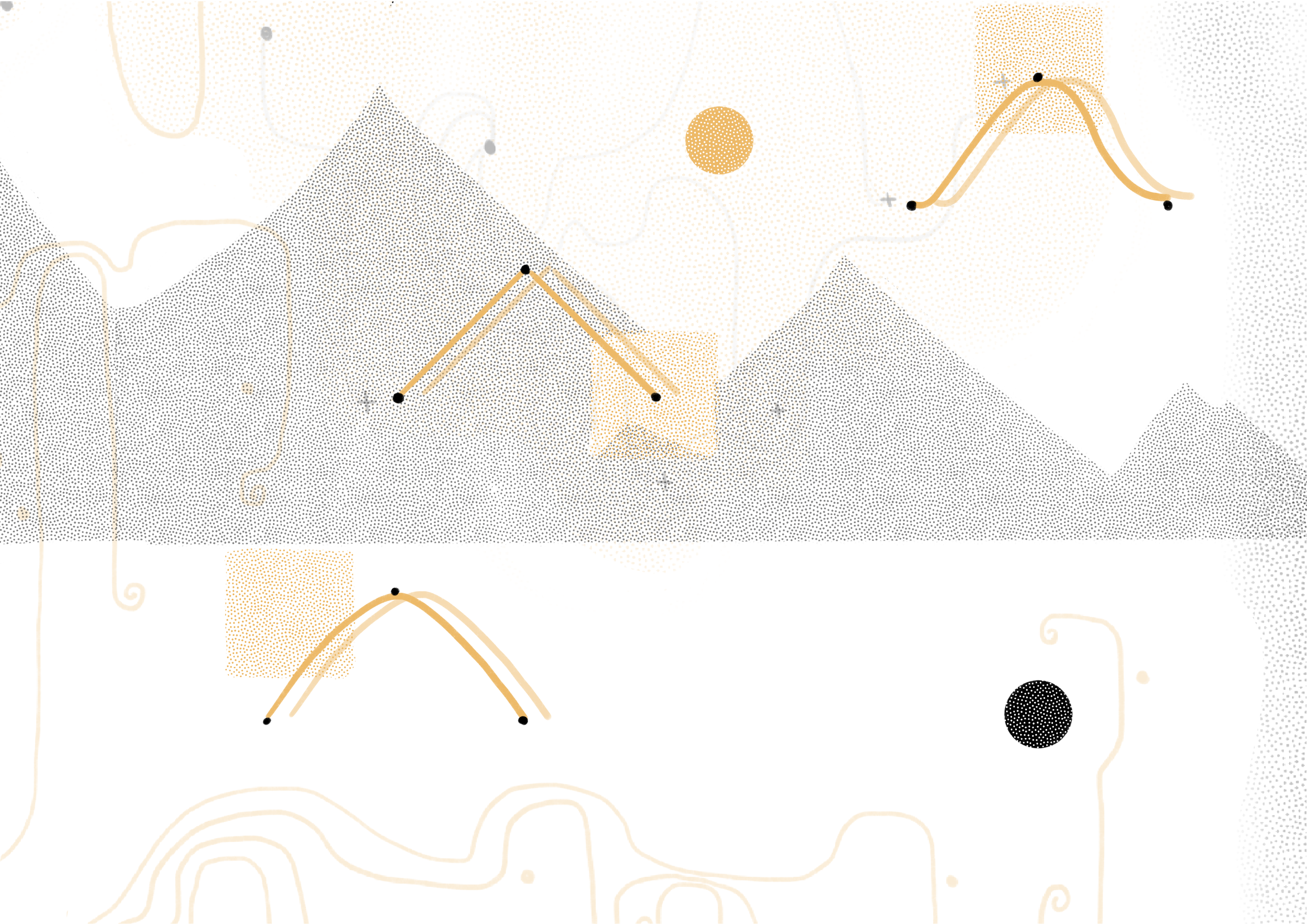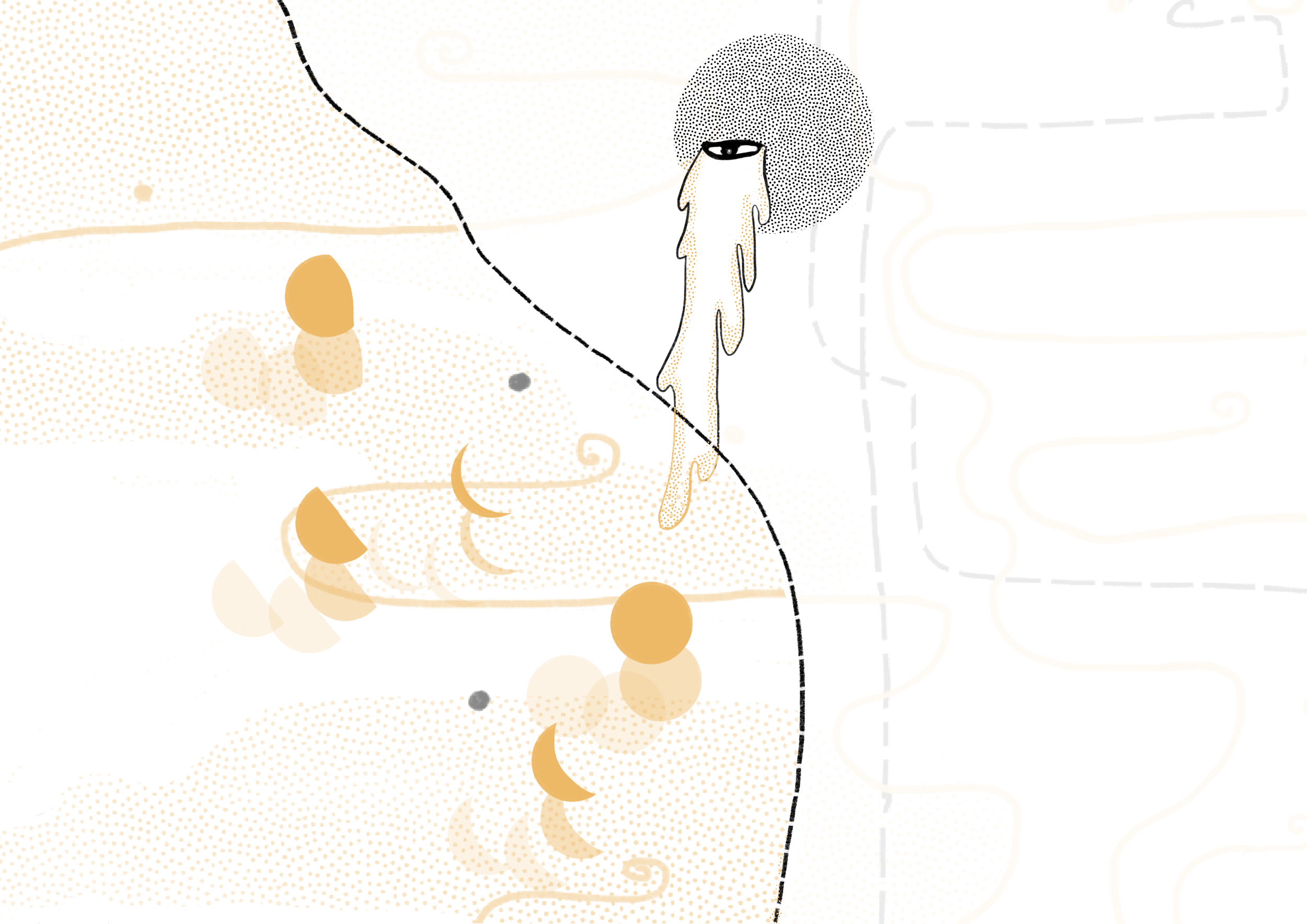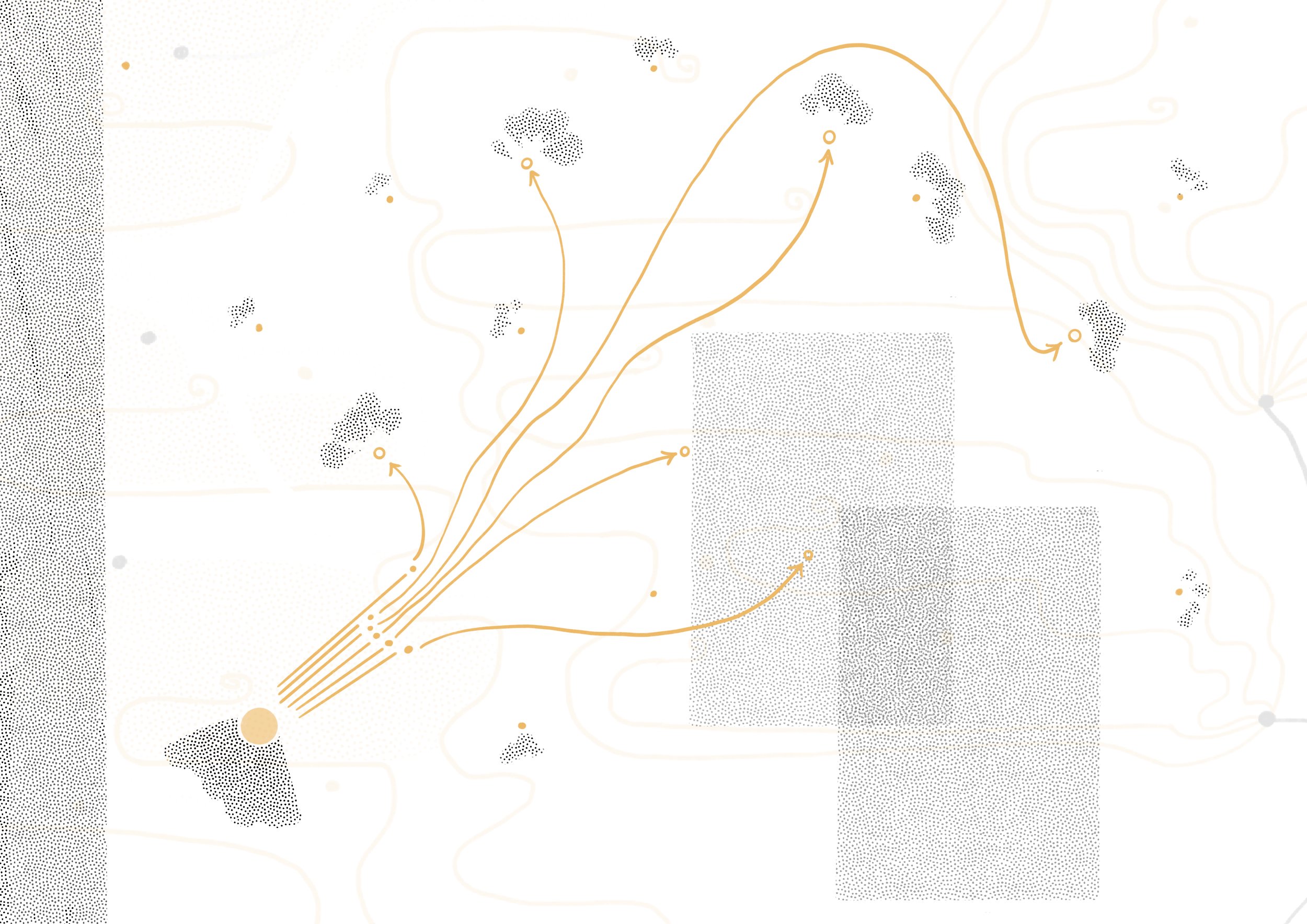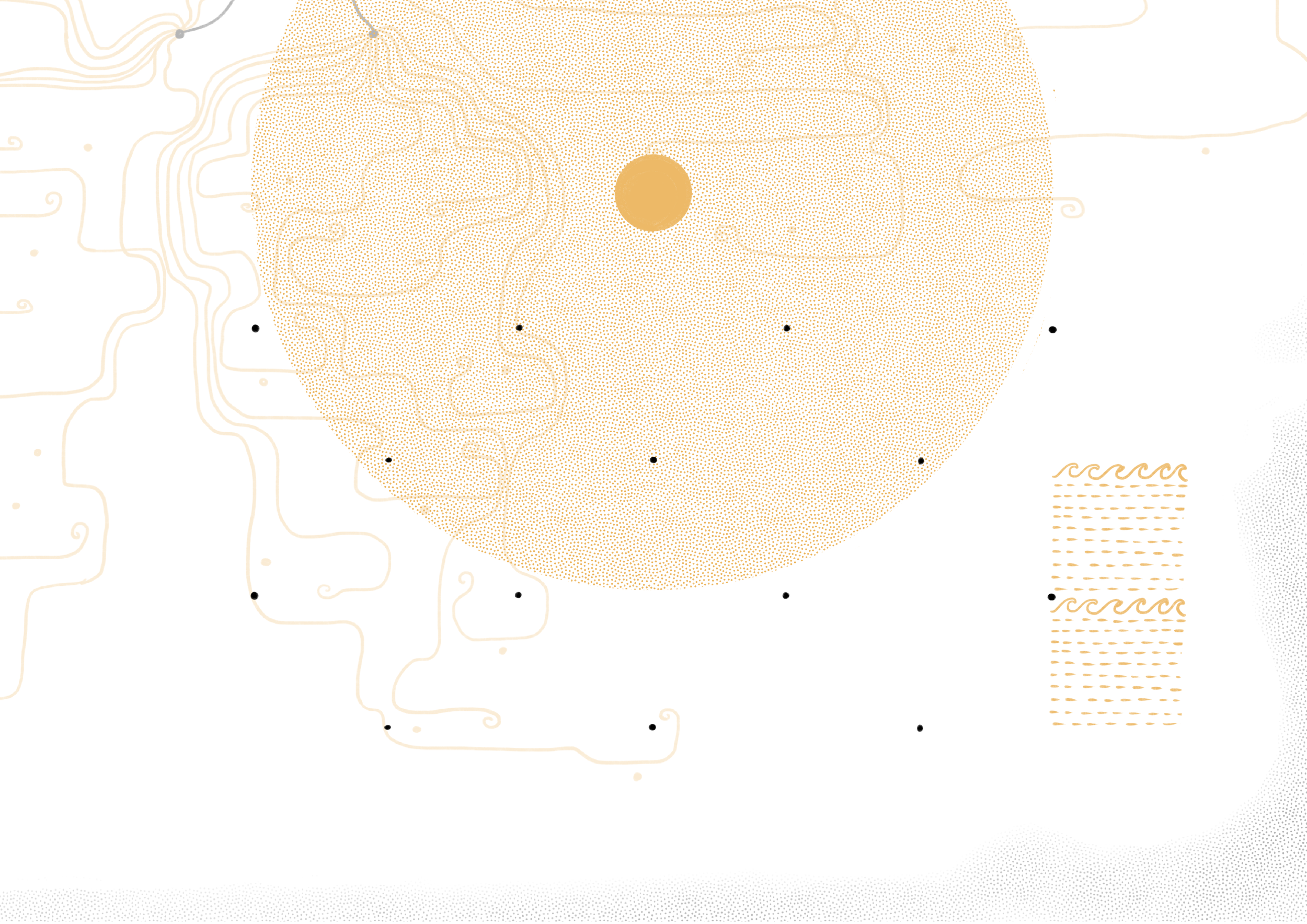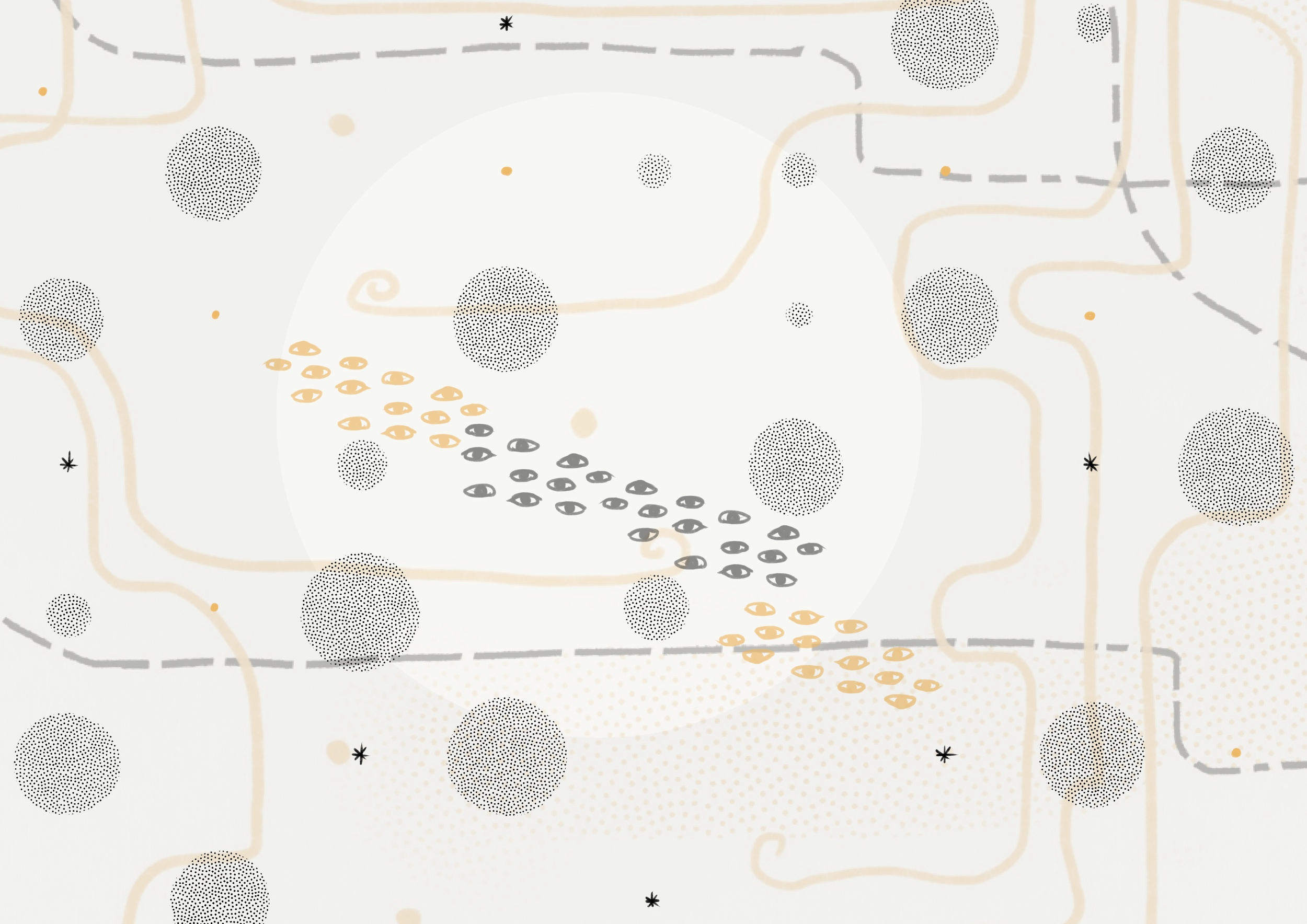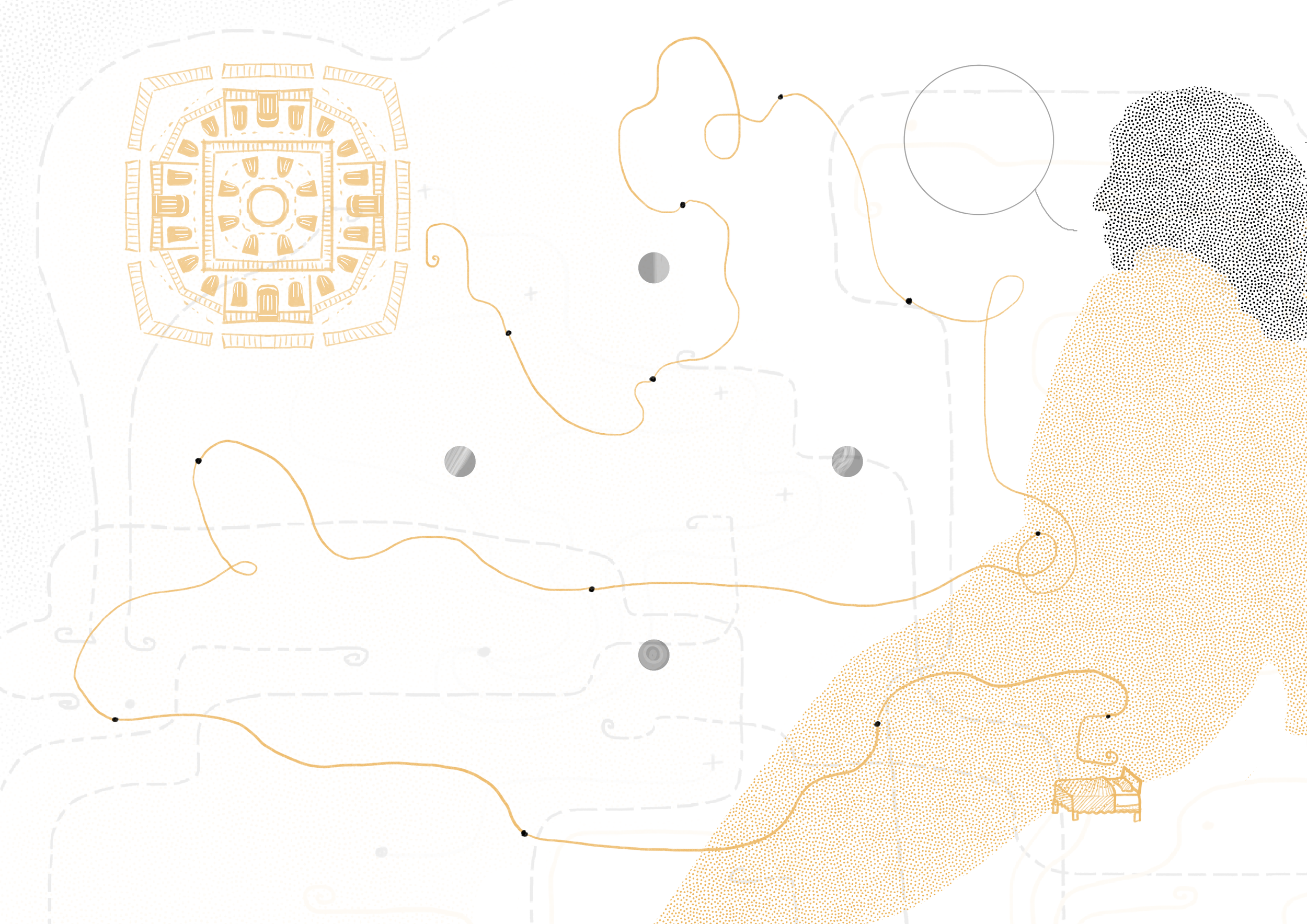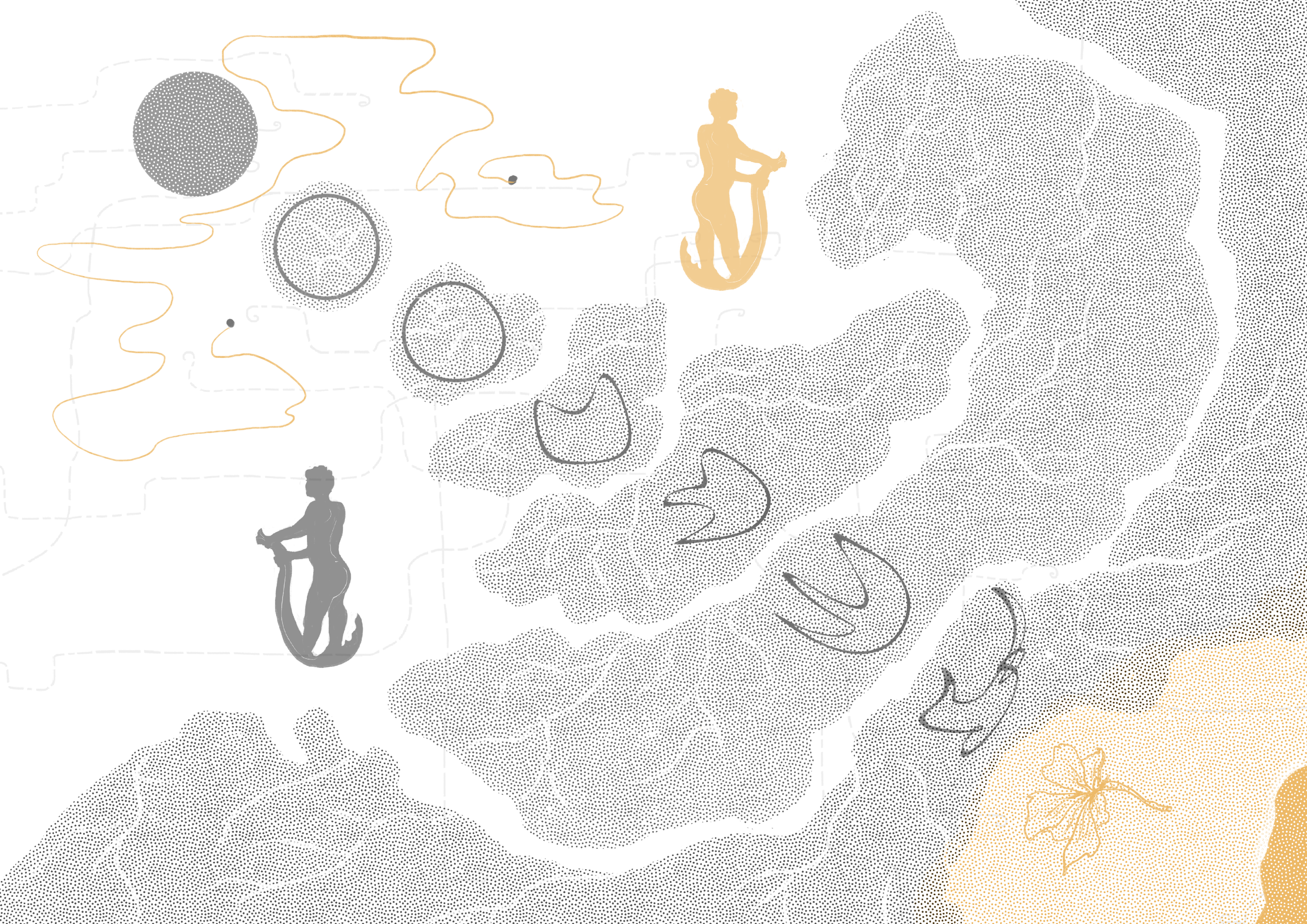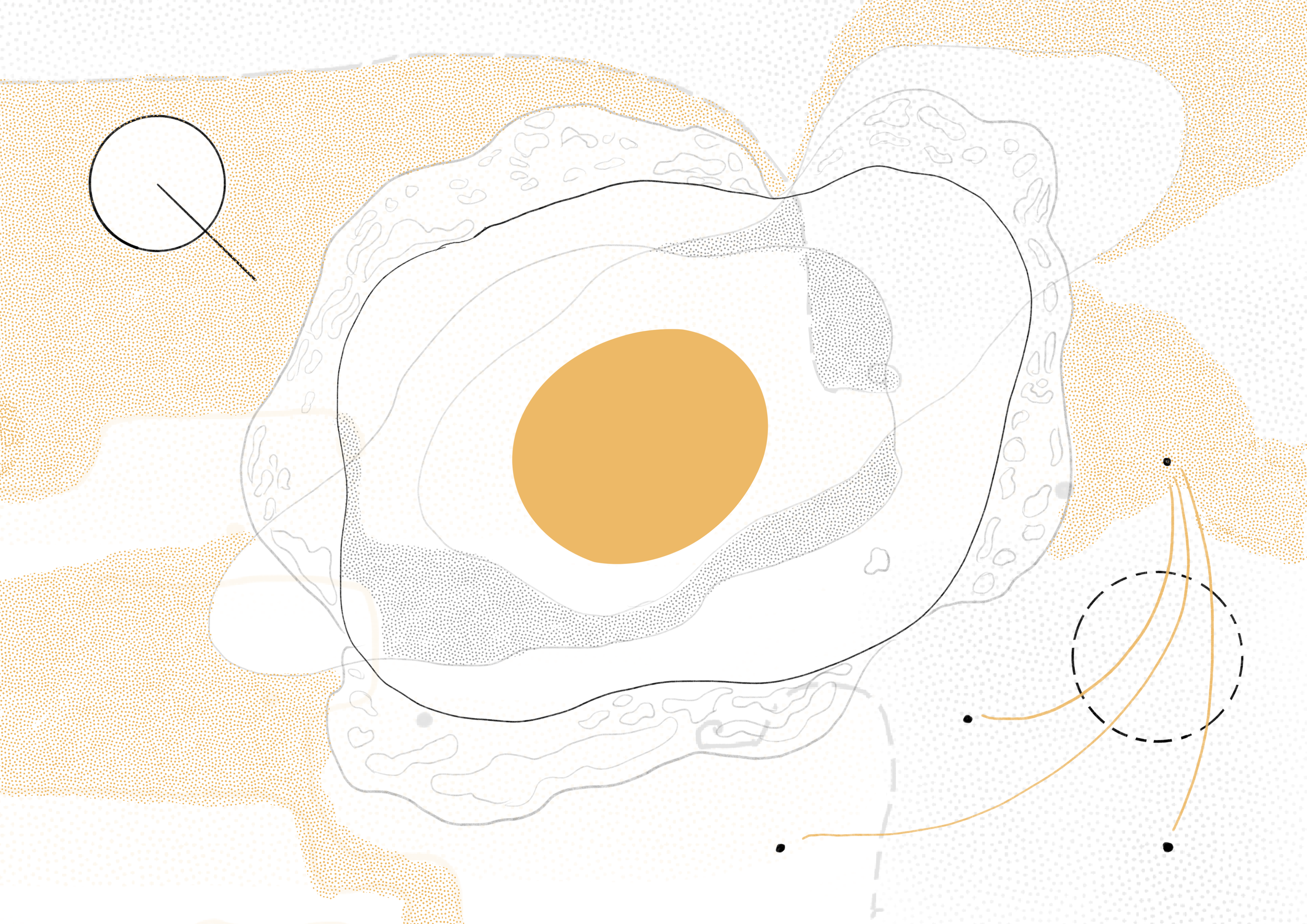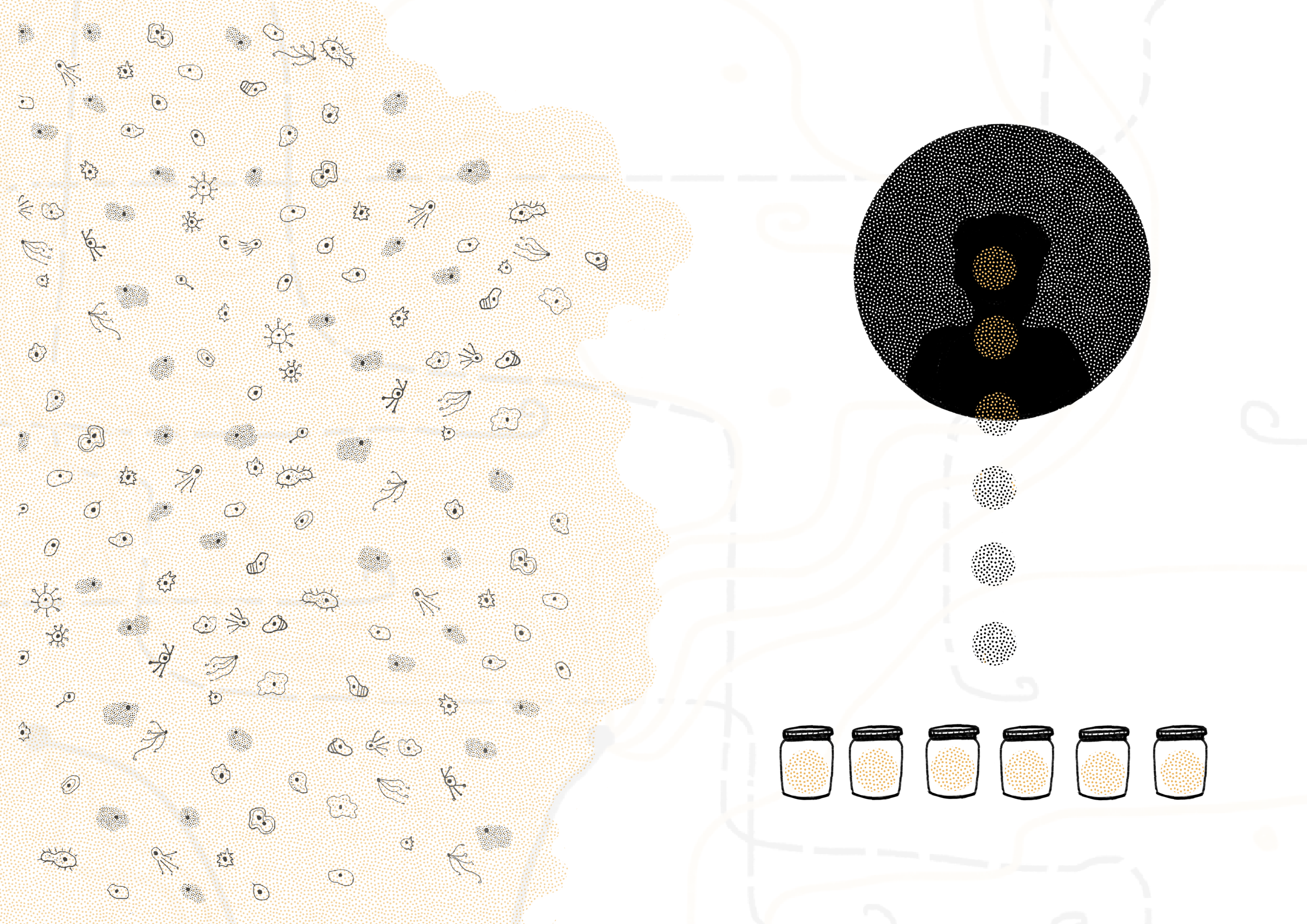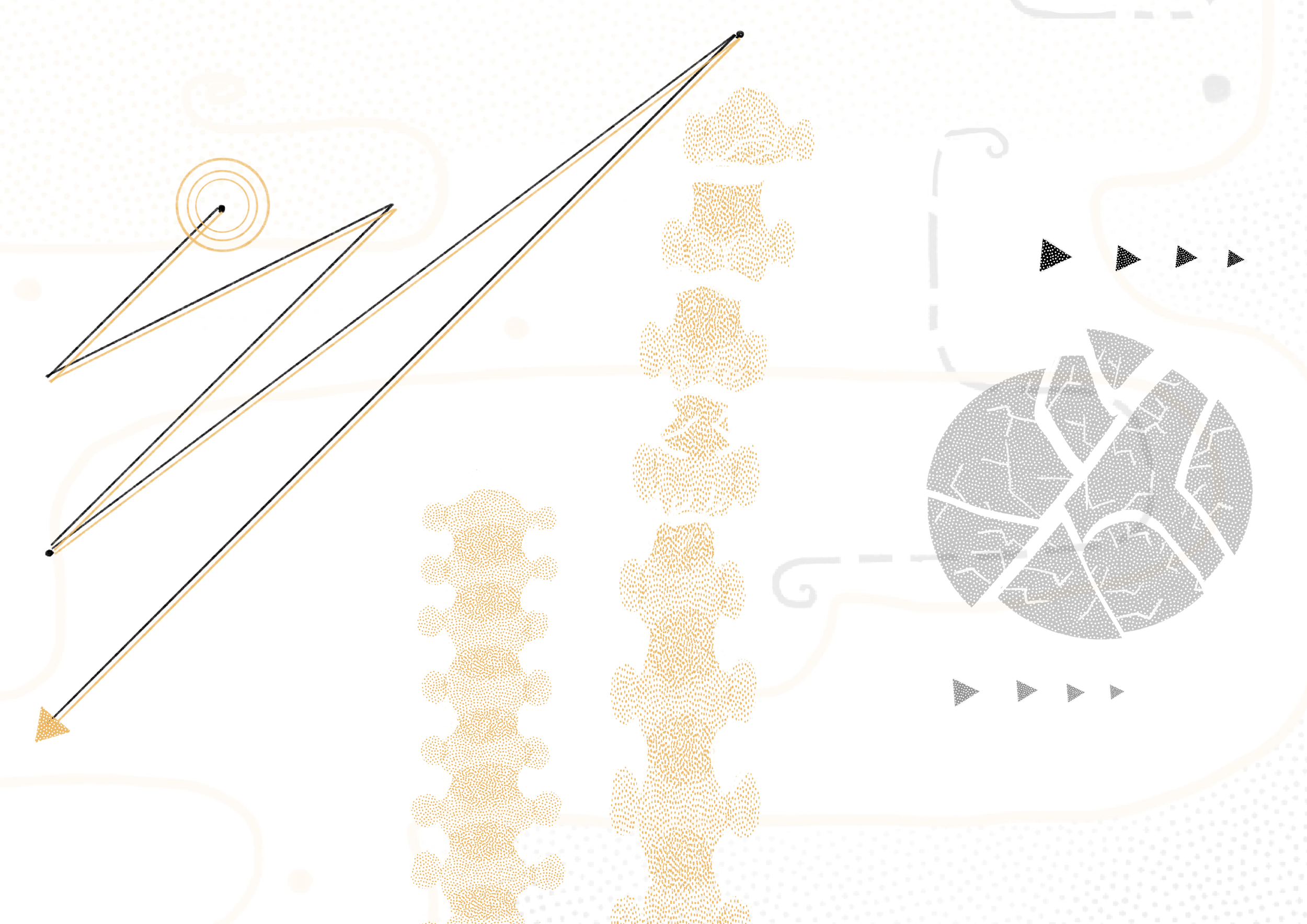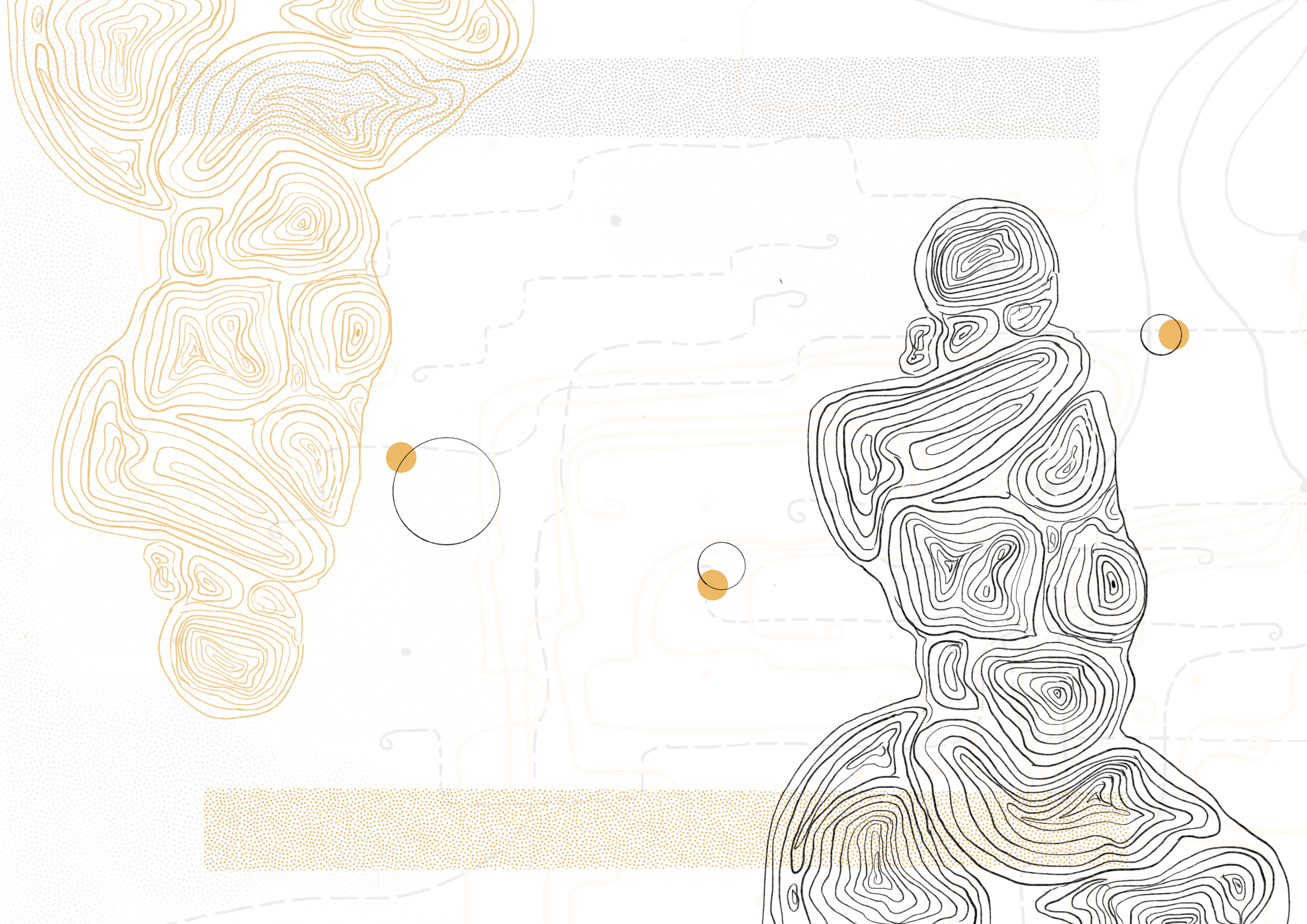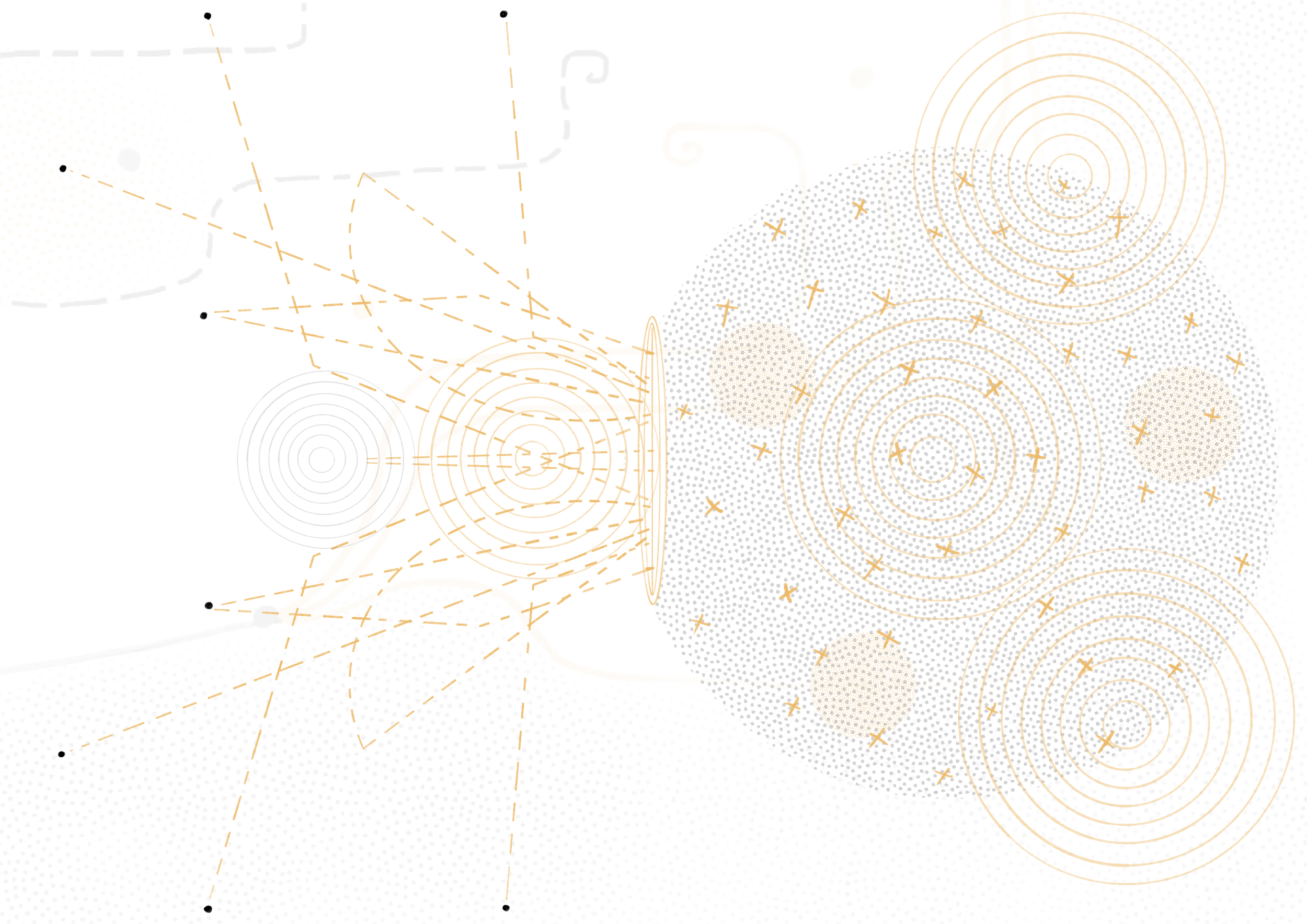My Last Stretch
Dayita Nereyeth
Stretching was ingrained in me early in my life as integral to every dance practice. But as a direct result of working with the Alexander Technique, as well as deeper engagement in my personal movement practice in my living room during the pandemic, I started to question the seemingly meaningless ‘shapes’ I was creating before and after I danced. These shapes – splits, butterfly, and others – had for many years masqueraded as useful and necessary in my life. I was stuck in a perpetual cycle of pain, disconnection, and obsessive, damaging habit. Until my introduction to the Alexander Technique, however, I was blind to this.
Through this piece, I trace my journey with stretching, and pinpoint when I realised that it was counterproductive to my dance, Alexander Technique, and life practices. I look at dance structures and social media depictions of hypermobility that compelled me to push through pain and far beyond the reasonable limits of my body. I consider the psychophysical disconnect that came with a mind-over-matter approach to dance, and the long-term effects of ignoring the pain associated with stretching. At the end, I offer a short semi-supine talk-through that may help to promote expansion in the entire self, going beyond superficial (and, indeed, temporary) work on the muscles.
This essay, rooted in personal experience and supplemented by embodied research, is autobiographical. But I hope that the ideas resonate with movers all around the world, so we can begin to collectively shed constricting ideals and practices to allow our free, natural selves to live and dance uninhibited.
Note: Most of my experiences with stretching and ballet are recreated entirely from memory, many years on. As such, they are quite likely coloured by my current outlook on stretching. Since beginning to study the Alexander Technique in 2018, I have kept a fairly regular journal, so what I describe between then and now, 2022, is a pretty good representation of reality.
Enter Ballet
I started doing ballet when I was five years old. I was painfully shy as a child. To get me out of my shell, my mother enrolled me in a class that took place in our apartment building. It was here that I discovered that I was ‘naturally flexible,’ something that I had had no consciousness of before ballet.
From this class, I moved to others, and dug deeper into the world of fairies, swans, and nymphs, thoroughly enamoured of it all. Through my pre-teen and teen years, I spent many hours each week in ballet class and rehearsal. I prioritised it above everything else – academics, socialising, and even rest. If I wasn’t in a studio or on stage, I was immersed in ballet books and movies, completely invested in becoming what I read about and saw. Ballet was so fundamental to my identity that I forced my legs to turn out all the time – in everyday life, when I could have just been a human, I chose to walk around like a penguin. It’s this kind of silly thing that may reveal the hold ballet had on me.
Everything I heard in a ballet class, I instantly brought into my entire life – I did not let go of anything beyond the studio. I constantly pulled my stomach in to bring myself closer to two-dimensionality (even in my sleep), a habit that plagues me twenty-five years on. I pulled up the inner arches of my feet to prevent them from flattening. I lounged around the house in a leotard, tights, and pointe shoes (torturous to consider, in retrospect). I thought, dreamt, and breathed ballet.
Naturally, because of this obsession, I was no stranger to the widespread culture of stretching before and after dancing. Like the other dedicated students around me, I began to stretch as soon as I stepped into the studio. I learnt that I needed to stretch my feet, my hamstrings, and my turnout muscles.
Pain and disconnection
It was a ritual, a routine. Once I fixed what became my ongoing stretching regimen, I didn’t dwell on what I was doing or why, and rarely gave myself the choice to not go through with it. Stretching was expected of me, and as a disciplined dancer, I had to comply. I internalised the idea that stretching was a necessary prologue and epilogue to every movement practice. I carried it from childhood into college as a dance major, and afterwards, into my professional life. And, even when I expanded my movement vocabulary beyond ballet, my stretching exercises stayed intact.
Before class, I was not so bothered about warming up in the sense of promoting blood flow in my body; I was invested in static stretching, which I thought would help me become more flexible. I began with my feet, willing my toes to point all the way to the ground (they never did). I then stretched my spine forward, while sitting with my legs in butterfly pose, pigeon pose, straight out in front of me, or in a side split. I had varying levels of success in each of these positions, but insistently dug into them, trying to lengthen the specific muscles that these stretches targeted. I punctuated my classes by stretching my calves, hip flexors, or back. There was never a bad time to work on my flexibility. After a practice, I lingered in each position as a way to cool down. This, I reasoned, was a necessary massage for my muscles, and the only way I could avoid feeling scrunched up for the rest of the day. I sometimes involved various props, people and otherwise, in my after-practice stretch. I had foot-stretching devices, stretchy bands, and friends to guide me deep into various contortions. Outside of dance, I often watched TV or read while in butterfly pose, a backbend off the couch or on a gym ball, or sitting in some kind of split. I hoped that if I adopted an extreme position and forgot about it, it would slowly get easier. I can’t say that it ever did, but I persisted.
Most of the stretches I did were relatively safe, as they targeted my muscles. But I would be remiss not to mention a significant one that I picked up in college. My knees never allowed my legs to form ballet’s coveted hyperextended line. But I wanted what I didn’t have, what I saw in the flawless dancers around me. So I forced my knees back, even though I knew that this was a bad idea, biomechanically. Unlike with the other muscular stretches, I was never explicitly asked to hyperextend my knees. But I found it hard to overlook the subtle compliments aimed at fellow dancers with naturally swayed-back knees. I wanted to embody the ballet aesthetic so badly that I made it a habit to brace my knees back all the time, which has contributed to recurring problems with instability and misuse.
It didn’t help that hypermobile movers on So You Think You Can Dance – once a highlight of my TV-watching experience – and the internet shaped my perceptions of the ideal dancer body. When I joined Instagram in 2015, I faced a daily barrage of unrealistic expectation in the seemingly boneless dancers in all manner of contortions. People from around the world validated in photos and videos the almost militaristic culture I had grown up in. If I had body image issues from comparing myself to my (often much more flexible) colleagues and the ideal of the perfect ballet dancer, these feelings skyrocketed when I joined Instagram. Although most of the dancers I saw online seemed to (over)stretch with considerable ease, I told myself that because my anatomical structure was not as forgiving as theirs, I had to push hard to get where they were. The pain that accompanied this approach, I believed, was just part of the package.
I dubbed the sensations that came with stretching as ‘good pain.’ I welcomed the micro-tears in my muscles. At various points these micro-tears even became bigger soft-tissue injuries, but for the most part I carried on. The inevitable soreness and what I can only describe as a brittle feeling in my muscles – which I craved to a certain extent – meant to me that I had worked hard, and that I would be more agile and available for the next day. Without this, I felt lazy.
Perhaps on some level I wondered about what I was putting myself through. But I didn’t have the courage to question it out loud. I wrote off the days that I felt terrible after stretching as normal in the life of a dedicated ballet dancer. I rarely changed the intensity of my stretches, even if I was injured or sick. Also, at various points, the dancers around me confirmed that they too were working through pain and injury – that was just the dance life. We got into it and got on with it. I trained myself in a mind-over-matter approach, particularly eager to surpass my many perceived physical limitations with my cultivated stretching practice. I told myself that ballet dancers, and I, had a high tolerance for pain. In this way, I rationalised an obsessive, damaging habit.
I often pushed myself far beyond my limits and chased ideals. If I encountered dance teachers who spoke of ease in movement and loose muscles, I dismissed them as deluded. I thought I knew what I needed, and unfortunately the path I walked was filled with tension and pain. I silenced pain signals rather than attending to them, and slowly but surely disconnected from the present and from myself. Over time, I desensitised myself and rarely inhabited my body when I danced. That is to say, I adopted a separatist approach so that even if my body was begging me to stop, my mind said, “Absolutely not, keep going.” This brought me several times to injuries of varying grades, headaches, and the most annoying of all, a perpetually stiff neck.
Enter Alexander Technique
In 2018, unable to handle the recurring stiff neck and resultant pain and injuries I kept enduring, I joined a continuous learning programme in the Alexander Technique. I knew deep down that I needed to alter something in my movement practice, because the amount of pressure I was putting on myself was unsustainable. Above all, I wanted a long dance career, so I took the plunge into this new world. Before 2018, I had encountered the technique a few times, but rejected it as useless, lazy, and the opposite of what a real dancer needed.
In the continuous learning programme, I discovered many things. The Alexander Technique showed me the importance of encouraging an ongoing awareness of my primary relationship – the neck, head, and back (which includes the spine, ribs, and pelvis) and how these parts work together. Up until I started using the technique, my legs and feet were my main concerns because of their prominence in the ballet aesthetic. I didn’t pay much attention to my primary; I understood my ‘core’ as a muscular centre in my abdomen which had nothing to do with a bony framework. In the Alexander Technique, however, the central axis of the neck–head–back was the entry point, and the limbs came second, in all activity, mundane or specialised. This was to avoid overusing, and inevitably tiring, the arms and legs, and to allow a strong, integrated back to lead.
The bones, my teachers Robin and Béatrice Simmons told me, were like stretchers for the muscles, which needed to engage only a certain amount (necessary tone) before it became too much (unnecessary tension). With this approach, I could consciously direct my bones to move, rather than thinking about it muscularly. For instance, instead of squeezing my hips and thigh muscles to raise my leg, I could direct my toes away from my central axis. This didn’t mean that my muscles remained slack; they just didn’t need to overwork. Perhaps the focus was also on parts moving away from rather than closer to one another. I was told that, in most cases, less was more. The key was to find a dynamic balance in length and width throughout the self. I was also encouraged to stop before I reached my limit, never mind pushing past it.
Perhaps the most important aspect for me, as a perfectionist dancer, was the notion of psychophysical unity. ‘There’s no such thing as a mind or a body in nature,’ my teacher Robin often said. ‘There is only the self.’ So the idea that physical limitations could be overcome with mental toughness and rigour simply didn’t apply. It was vital to work on the whole mind–body unity – including thoughts, ideas, and emotions, which often manifest as muscular tensions – not just what I perceived as purely physical, as, for example, stiff hip joints.
My teachers guided me through an indirect approach. Rather than an ‘end-gaining’ one in which, for instance, I stretched particular muscles to increase mobility in them and the closest joints, I was introduced to ‘undoing’ or releasing into movement and attending to the whole self rather than to individual parts. This involved first checking in with my primary relationship, and then including it along with an awareness of my limbs. Instead of directly trying to correct a perceived or real issue in a specific part of my anatomy, I could consider gradually improving the coordination of my whole person. In this way, particular issues could often take care of themselves.
Resistance
Initially I found the Alexander Technique principles too simplistic. I wondered what the catch was – how anything could be so easy and pain-free. How would I get anywhere? I listened to my teachers, but had one foot out the door in case they said anything I deemed too ridiculous.
The Alexander Technique challenged much of what I had practised as a dancer. Indeed, I had allowed this dancer persona to become my entire identity – carrying habits and tensions far beyond the studio, even into my sleep – so letting go of what I had cultivated over twenty years was an affront to my being. I was terrified at the possibility of losing all the work I had done.
One of the first lines I ever wrote in my Alexander Technique journal was:
Stretching is doing.
In saying this to me, my teachers implied that there was tension, stiffness, and end-gaining involved in it. But although I made this note, I didn’t subscribe to it; stretching was too fundamental to my life. I felt that my teachers were out of their minds for suggesting that stretching was unnecessary. How else would I get rid of the tensions that I had accumulated during a dance practice? I could to some degree comprehend skipping my beginning stretches, but never the ending ones.
Rather than questioning my existing habits, I doubted these new, more holistic ideas. An indirect approach sounded like a waste of my time. If I wanted to loosen a certain muscle, why would I bother about my primary relationship or the coordination of my whole self when I could just go ahead and stretch it out?
There was a lot for me to unlearn, and I took time.
But despite my initial resistance, I gradually let the technique into my life. I started to notice extra tensions I hadn’t previously been aware of, patterns that I could relieve myself of, and possibilities for growth in my whole being. Unlike before, I could recognise my dance-related habits and stop them from invading my entire life. I learnt to leave my movement tendencies in the studio rather than carrying them into my everyday existence. Among many other things, my chronic stiff neck freed up, old injuries, extra tension, and aches eased their way out of my system, and I started to consider pain and tiredness as reasons to stop and rest rather than challenges to overcome.
My Last Stretch
When the pandemic hit in 2020, the dance world went online. At this point, I took all manner of dance classes online. Cunningham, ballet, Gaga, and Countertechnique all happened in the snug frame of my living room. Without external eyes on me, I played with bringing the Alexander Technique’s focus on the bones into my practice. This made my dancing lighter, more grounded, and more expansive. I began to rediscover joy in movement; somewhere along the way I had lost this joy for stress, anxiety, and ambition, and found it only fleetingly, if ever.
In working on my own, my movement practice was turned on its head – in a good way. But despite this, my stretching remained unchanged.
The old idea of trying to be right has remained with us, in spite of the fact that conditions have changed and our right is wrong.
- Frederick Mathias Alexander in Aphorisms, 2000.
This aphorism from FM Alexander clearly describes my living room dance situation: while I was able to undo several unhelpful patterns in my approach to movement, my stretching routine persevered. It took another year before I started to ask myself the hard questions.
On April 21, 2021, I wrote in my journal:
What are these stretches/shapes accomplishing?
That day, after dancing, I observed myself listlessly and quickly going through the usual series of shapes, undoubtedly holding my breath during the harder ones, just to say to myself, “I stretched today.” The flow of energy and lightness from dancing was replaced by uneven tightness and poorly distributed tension. While I thought stretching was helping me lengthen my muscles, in reality I was just contracting further, and only in a few places. But I felt I needed to practise splits and all the rest of it – what horrendous, stiff state would I be left in without them?
Still, the nagging sense that I had reached a saturation point with stretching didn’t leave me that week in April. Before then, it had never occurred to me to ask why I only stretched particular areas (feet, hamstrings, and turnout muscles). I had accepted the need to open up these parts as a functional choice and didn’t understand the aesthetic baggage it came with.
The day I asked myself what exactly I was doing, I remember the feelings that came up: confusion, betrayal, even disgust. I had spent so much time thinking I was making myself more flexible when I had just been stiffening up. I had divided myself into many parts and failed to recognise that localised tightness was psychophysical resistance in the whole self, manifesting in that area. Perceived physical stiffness was but one piece of the puzzle in which thoughts and emotions played an equal role. Stretching the way I did, I couldn’t accept myself and mobility in the moment – I chased an ideal without acknowledging the now.
On 26 April, I wrote:
Maybe I don’t need to stretch at the end of a dance class. Today I just lay down in semi-supine and ended on feelings of openness and mobility.
This was monumental. Stretching had been my security blanket, and although I felt vulnerable without it, here was confirmation that I could function in its absence. Rather than the usual after-dance aches, I experienced a gentle hum that flowed throughout my being. I felt as alive after dancing as I had during. I wanted more of this.
So in the days that followed, I experimented. At first, I replaced my stretching routine with a series of activities that I picked up in my Alexander Technique classes: walking backwards, semi-flexion, placing one leg at a time on a stool, crawling (which comes from Raymond Dart’s evolutionary movement procedures, but is useful for strengthening the back), squatting, and holding the rail of a chair with an extensor grip. It’s less important what these activities are or look like than that they gave me the chance to breathe and observe my entire self, starting with my primary relationship. I could engage in any of these activities and feel fairly confident that I was promoting expansion rather than contraction in myself, all the while thinking conscious thoughts for release, length, and width. Here though, I replaced one set of habits with another. I didn’t actually let go.
I then tried to approach stretching more gently – to arrange myself in the usual orientations, using supportive props to avoid the ‘feeling’ of a stretch. I reasoned that if I was able to feel the stretch in my muscles, it was a sure sign that I was doing more than my bones would easily allow. I could simply wait and breathe in each orientation rather than yank my muscles about. This way, I would not be stretching in the traditional sense, but I could think myself towards greater mobility. There seemed to be more psychophysical integrity this way; I physically inhabited a certain orientation and guided my thoughts in the same way, without allowing my mind to dominate or force an outcome. I gave myself the space to observe tendencies and ask questions. But I soon realised that even these gentler versions of my routine were instances of end-gaining because I was still bothered about attaining a physical ideal, although I had slowed down a lot.
When I recognised this, I gave it all up. What I had built over two decades I dismantled in less than two weeks. I also let go of the idea that the pain of stretching was pleasurable and inevitable to my dance life, and confronted it for what it was – unnecessary.
On 11 May, I noted:
My lower back and hips have opened enormously in the last few weeks of not stretching.
Under all the insecurities, ideals, and obsessions, all I really wanted was openness and availability. And I started to have it once I let go of trying so hard to get it. The rigid routine I had imposed on myself had been more of a problem than the many imperfections I saw in my anatomy. The openness that I previously stretched to gain became more than just a temporary fix that I had to keep returning to; the focus on bones and joints gave my muscles the time and space to lengthen in a long-lasting manner. Change was slow but deep.
Over a year since giving up stretching, I believe I am more mobile than I was while I stretched. I can’t say for sure if I can still go as far in splits or other typical positions, but I can confirm that I have a stronger back, greater access to external rotation in my hips, far more range in my feet and ankles, and a general sense of ease in motion. Now, when I dance – and a lot of the time otherwise – I feel alive, vibrant, warm, and like I have luscious and available muscles. Another amazing, and unintended consequence is that I have gained the ability to squat with my heels on the ground. I had never been able to squat fully, which was problematic in some dance and life contexts. What I had earlier understood as shortness in my Achilles’ tendons and stiffness in my ankles was actually excessive and poorly distributed tension throughout my being. As I reorganised my coordination though, squatting became possible. I no longer needed to stretch my calves to make it happen. Similarly, other areas in myself, which had become chronically tight during my dance career – the front of my left hip, my right shoulder, my neck, my left toes, my sacroiliac joints, to name a few – all started to unravel.
What, Then?
I am now working on fostering an unconditional friendship with myself. I don’t need to put myself through excessive pain in order to achieve something. I wonder, how can I replace judgemental thoughts with constructive ones? For one thing, this means recognising that I am already perfect; there is nothing I need to do and nowhere I have to go. Although this could be solely a philosophical consideration, it is also applicable to dance. Rather than running after constricting ideals in spite of pain and injury, I can approach movement and myself with curiosity.
Am I breathing? Can I be kind to myself, particularly on days that I am tired? Even if I do use some level of muscular tension in the context of my dance practice, can I release it, so it doesn’t become a part of my overall identity?
In attempting to answer all this, I don’t need to impose a structure all the time, although I can certainly choose one if it seems useful to me that day. This might involve a stretch or two from my previous dance life (of course done carefully, with attention to my whole self). It might not.
When I gave up stretching, I decided that maybe all I needed after a lot of movement was some stillness. Although there are various Alexander Technique activities that I now employ to prepare myself to dance, or for rest and recovery, I focus here on one: lying down or semi-supine. I find that engaged stillness with an active quality of attention and a focus on the breath is a good way to connect with myself and decompress. So here I offer a recorded talk-through for anyone who would like to try it out. If there is the possibility for it, a hands-on lesson with a qualified Alexander Technique teacher might also be enriching.
To aid engagement with the talk-through, the following pictures show people lying in semi-supine, along with some alternative possibilities. It’s usually a good idea to consider lying down once or twice a day for ten to fifteen minutes at a time.
Anishaa lies in semi-supine. The paperback books under her head do not touch her neck
Joshua adopts an alternative lying down orientation, which can be useful to release the legs
Ainesh makes a 90º angle in his legs, while his feet rest on the wall; another option would be for him to place his lower legs on a chair
Final Thoughts
I have gone from stretching to overstretching (doing and overdoing) to not stretching (undoing) in about twenty-five years of dance. Stretching was almost an addiction, and I needed to get my daily fix, or I didn’t feel right. But it yielded temporary results. Now, although I do work daily with the Alexander Technique, I have agency in the matter. I don’t feel obligated to do things a certain way or to remain fixed in a box. I focus on process in my relationship to dance and myself rather than on always trying to gain a predetermined end. So each day, I can choose what to do and how to go about it without feeling like I’ll fall behind.
I no longer relish soreness as a necessary remnant of hard work; it just feels like pain that I don’t need. I am now in a relatively peaceful state of being, with less exasperation at what I ‘lack’ physically and more wonder at myself and the possibilities for movement. I am more interested in exploration than adhering to a set of rules. My research currently involves observing myself in each moment, in movement or stillness. I am less concerned with unattainable ideals. I look forward to dancing, living, and lying down. In these moments, I observe activity, quiet, and vibrancy in my framework. I acknowledge that there is an ocean inside of me; I can swim deeper into it every day, but I can’t hope to manipulate it. All I can do is wait, watch, and allow. I have much to discover.
Acknowledgements
Thanks to
- my many dance teachers and colleagues, past and present
- my Alexander Technique teachers and colleagues
- the dancers of 206 for experimenting with me
- the people of Indent for offering me this space
Dayita Nereyeth (she/her) is a co-founder of 206 Dance Collective, senior editor for The Clean Copy, and an Alexander Technique teacher trainee based in Bangalore. She has performed extensively in India, the USA, and Switzerland, and presented her choreography in Bangalore and Goa as well as online. Dayita’s writing has been published in Ligament and various blogs. In her free time, Dayita plays the ukulele, reads, watches too much TV, and brews kombucha. More about her work at www.dayitanereyeth.com.
